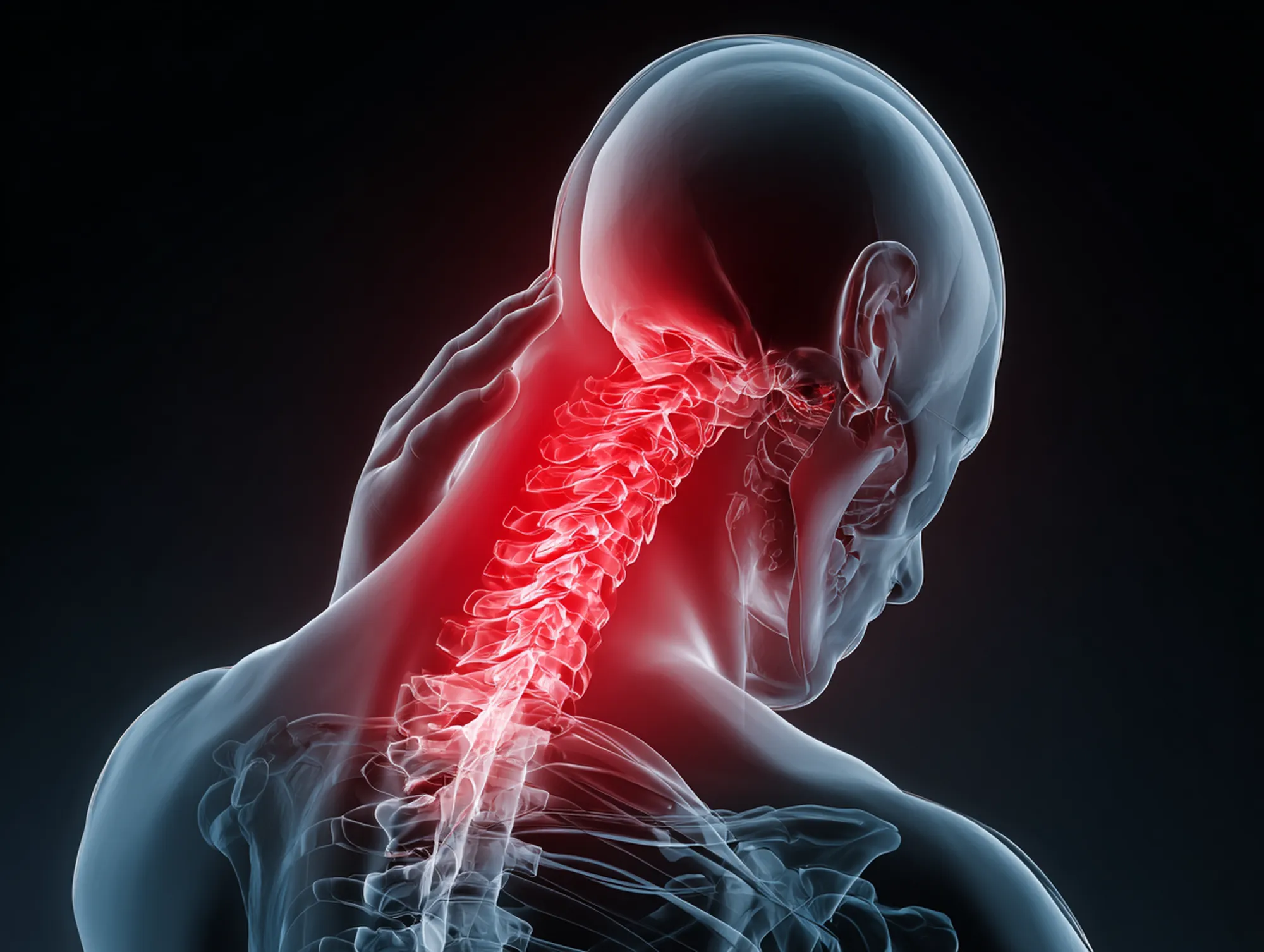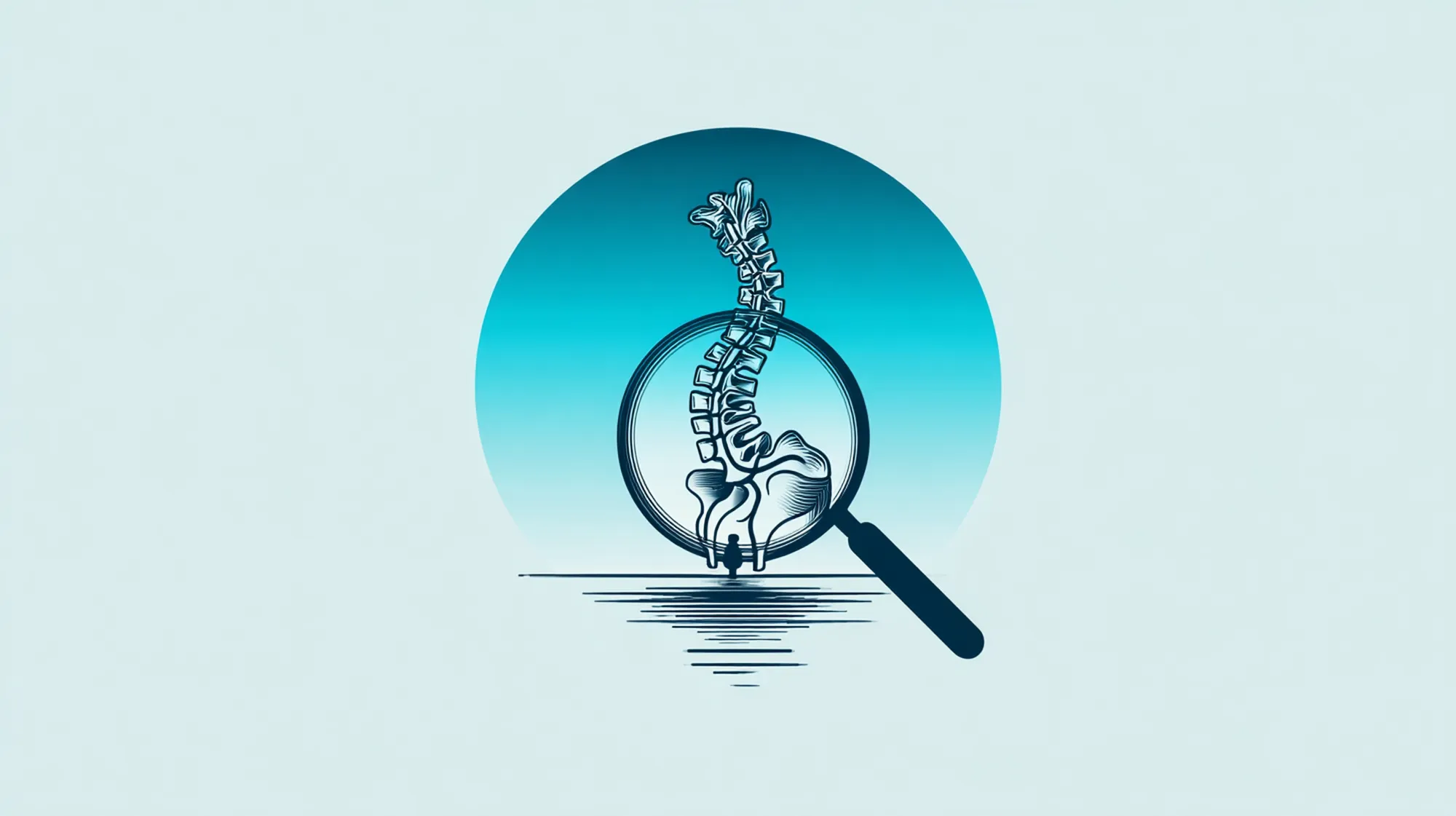As fall weather brings sudden temperature shifts and the holiday season ramps up stress, many migraine sufferers brace for more pounding headaches. Migraines are more than “just a headache” – they’re intense, often debilitating episodes that can derail your day. If you’re seeking a natural way to manage migraines (and the tension headaches that often come with them), chiropractic care might be the relief you’ve been looking for. In this article, we’ll explore common migraine triggers (like weather changes and stress), how neck alignment and chiropractic adjustments can reduce headaches, and lifestyle tips – from hydration to supplements – to help keep migraines at bay.

Migraines 101: Why Your Head Hurts (Especially in Fall & Holiday Season)
Migraines are incredibly common – over 39 million Americans experience these intense headaches[1]. They often come with throbbing pain (usually on one side of the head), nausea, and sensitivity to light or sound. But what triggers migraines? There are many potential culprits:
- Weather Changes: Ever notice a headache before a storm? Shifting weather and barometric pressure changes can trigger migraines for sensitive individuals[2]. Fall’s roller-coaster temperatures and storm fronts might be one reason migraines spike for some people.
- Stress and Holidays: Heightened stress – like the kind many of us feel around the busy holiday season – is a notorious migraine trigger. Emotional stress can set off a chain reaction of muscle tension and hormonal changes that lead to headaches. (It’s no wonder this time of year is sometimes called “headache season!”)
- Other Common Triggers: Migraines can also be set off by certain foods (like aged cheeses or red wine), hormonal changes, bright or flashing lights, poor sleep, or skipping meals. Each person’s triggers are different, so tracking your episodes can help pinpoint yours.
It’s worth noting that most recurring headaches are primary headaches – meaning the headache itself is the condition, not a symptom of another disease[3]. Migraines and tension headaches fall in this category. A huge factor in these headaches is muscle tension and posture. In fact, the great majority of headaches are linked to muscle tension in the neck[4]. Think about your daily routine: hours hunched over a computer or looking down at your phone can strain the neck and upper back. This tightness and misalignment in the cervical spine (neck region) can irritate nerves and restrict blood flow, often resulting in pain that radiates up into the head. It’s no coincidence that over 75% of people with migraines report neck pain and stiffness along with their headaches[5]. In short, when your neck is out of whack, your head often hurts too.

The Neck Connection: Tension, Misalignment & Headaches
Why does a stiff or misaligned neck trigger headaches or migraines? The answer lies in the close relationship between the upper spine and the nerves that travel into the head. Poor posture (like slouching at a desk) or past injuries can cause misalignments in the cervical vertebrae and tightness in surrounding muscles. This condition can lead to cervicogenic headaches – a type of headache that actually originates from the neck. Even for true migraines (which have complex neurological causes), neck tension is a common accomplice that can worsen the intensity or frequency of attacks.
Here are a few neck-related factors that contribute to headaches:
- Muscle Tension & Trigger Points: Knots in the neck and shoulder muscles (trigger points) can refer pain to the head. Ever had a tight knot at the base of your skull during a headache? That’s the neck-headache connection in action. Releasing that muscle tension often helps the headache fade.
- Nerve Irritation: Misaligned neck joints can pinch or irritate nerves that travel into your head. For example, the occipital nerves exit the upper neck and wrap around the scalp; if they’re irritated, you can feel it as scalp or eye pain.
- Reduced Blood Flow: Poor posture and tight muscles may also alter blood flow to the brain. Some migraine theories suggest changes in blood circulation (along with nerve signals) play a role in headaches. A freely moving neck with good alignment can support healthy circulation.
Given this strong neck-headache link, it makes sense that addressing neck issues can lead to relief. This is exactly where chiropractic shines – by caring for the health of your spine and its nerves. One big reason people turn to chiropractors for headaches is to tackle that hidden neck tension trigger that medication might miss. Chiropractic care is actually a well-established treatment for tension headaches and neck-related headaches[6][4]. And as we’ll discuss next, there’s growing evidence it helps with migraines too.

How Chiropractic Adjustments Help Migraine Sufferers
Can a chiropractor really make a difference for migraines? Many patients say YES – and research backs it up. A 2011 clinical study found that chiropractic care (including gentle spinal adjustments) can improve migraine headaches and cervicogenic headaches[7]. Chiropractors focus on correcting misalignments (subluxations) in the spine, particularly in the neck for migraine cases. By doing so, they help:
- Restore Proper Alignment: Precise spinal manipulation improves spinal function and alleviates stress on your system[8]. In simpler terms, adjustments unlock stiff joints and guide vertebrae back into their correct position. This takes pressure off irritated nerves that can trigger headache pain. Many migraine sufferers report their head feels “clearer” and tension eases after an adjustment.
- Reduce Muscle Tension: Chiropractors often incorporate soft tissue work – stretches, therapeutic massage, or trigger point therapy – during visits[9]. By relaxing tight neck and shoulder muscles, chiropractic care addresses one of the root causes of tension headaches and migraines. Less muscle spasm means fewer headache flare-ups.
- Improve Nerve Communication: Your spine houses your spinal cord – the highway of the nervous system. Misalignments are like roadblocks that distort the messages traveling between your brain and body. Adjustments remove those roadblocks, helping your nervous system function optimally. For migraines, this may mean calmer nerve signals and less oversensitivity that can spark an attack.
- Offer Drug-Free Relief: Migraines are often treated with medications (like pain relievers or preventive drugs), but these can come with side effects or only partial relief. Chiropractic is appealing because it’s natural and drug-free. In fact, an encouraging review found that manual therapies (including chiropractic adjustments) can be as effective as common migraine preventive medications – without the medication side effects[10]. That’s huge for someone who can’t tolerate migraine meds or prefers a holistic approach.
Every migraine patient is unique, so chiropractors take a personalized approach. When you visit The Well-House Chiropractic for headaches, we start with a thorough evaluation. We’ll check your posture, spinal alignment, muscle tension, and discuss your triggers and health history. From there, your treatment may include:
- Gentle Chiropractic Adjustments: Focused on the cervical spine (neck) and upper back to improve alignment and mobility. Adjustments are typically done by hand or with a small instrument, and they’re tailored to your comfort level – many patients find them relaxing.
- Posture and Ergonomic Coaching: We’ll help you identify bad postural habits that might be straining your neck. Simple changes like adjusting your computer monitor height or pillows can make a big difference. (Remember, long hours in one position contribute to headaches – so we teach you to break that cycle[11].)
- Lifestyle and Nutritional Advice: Chiropractors view health holistically. We might discuss your diet (certain foods or caffeine could be triggering you) and recommend supplements like B-vitamins or magnesium for nervous system support[12]. (More on magnesium in a moment – it’s a natural migraine-fighter!). We’ll also talk about stress management techniques or stretches you can do at home.
- Coordinated Care: If your migraines are severe, we’ll gladly work alongside your primary care doctor or neurologist. Chiropractic care can complement medical treatments. Our goal is to build your resilience so you experience fewer migraines, period.
Many of our local Chillicothe, MO patients come to us frustrated after years of migraines. It’s incredibly rewarding to see their progress after a series of chiropractic sessions. Some report that headaches which struck weekly now only appear occasionally, or that their migraine intensity dropped from an 8/10 pain to a 3/10. Every case is different, but improving spinal health often sets the stage for fewer, less severe migraines. It’s not a “quick fix” magic cure – but with time and consistent care, chiropractic can offer lasting migraine relief. And when you’re getting 3-4 fewer migraines a month, that’s life-changing.
(If you’re in Chillicothe and wondering whether a chiropractor can help your specific headaches, give us a call – we’re happy to chat and answer questions!)

Natural Tips to Manage Migraines (Hydration, Posture & More)
Chiropractic adjustments are a cornerstone of natural migraine management, but they work even better combined with smart lifestyle habits. You can do a lot on your own to make your head less prone to splitting pain. Here are some natural migraine remedies and prevention tips that we highly recommend to our patients:
- Stay Hydrated: Dehydration is a sneaky but common headache trigger. Aim to drink at least eight 8-ounce glasses of water a day[13]. When the air gets drier in fall and winter (and we’re guzzling coffee to stay warm and alert), it’s easy to forget water. Keep a bottle at your desk and refill often. Your head will thank you.
- Mind Your Magnesium: Magnesium is a mineral that helps relax nerves and muscles – and many of us don’t get enough of it. In fact, people with migraines often have lower magnesium levels than others[14]. Studies have shown taking magnesium supplements can significantly reduce the frequency of migraines, sometimes proving just as effective as prescription meds for prevention[15]. A typical preventive dose is around 400 mg of magnesium oxide daily (safe for most people, but consult your doctor if you have health conditions). You can also boost magnesium through diet: leafy greens, nuts, seeds, and whole grains are great sources.
- Posture Breaks & Ergonomics: We mentioned it earlier but it’s worth repeating – if you work at a desk or do any task for long periods, take a stretch break every 30-60 minutes[16]. Roll your neck gently, shrug and relax your shoulders, and rotate your head through a comfortable range of motion. Adjust your chair, screen, and keyboard to support good posture (ears over shoulders, not jutting forward). These mini-resets prevent the build-up of neck strain that can spark a headache.
- Stress Management: Since stress is a huge trigger, finding ways to unwind is key. Deep breathing exercises, meditation, or even a brisk walk can help diffuse stress before it snowballs into a migraine. Make time for self-care, especially during hectic seasons. Even 15 minutes of “me time” a day – stretching, a warm bath, or relaxing with music – can lower your stress load.
- Regular Exercise (Light & Consistent): Consistent physical activity can reduce the frequency of migraines over time by improving circulation and reducing stress hormones. Stick to low-impact exercises like walking, cycling, yoga, or swimming a few times a week. High-intensity workouts can occasionally trigger headaches in some people, so ease in gently and find what your body tolerates. The key is regular movement, not extreme intensity.
- Watch Your Caffeine & Diet: A little caffeine can actually stop a migraine (that’s why it’s an ingredient in some headache medications), but too much or caffeine withdrawal can trigger one. Keep caffeine moderate and consistent. Also, notice if any foods set you off – common ones are processed meats (nitrites), artificial sweeteners, MSG, or tyramine-rich foods. Maintaining balanced blood sugar by not skipping meals can prevent “hangry” headaches too.
- Healthy Sleep Routine: Aim for a regular sleep schedule with 7-8 hours of quality rest. Too little or too much sleep can provoke migraines in those who are sensitive. Create a calming bedtime routine and keep your sleep and wake times consistent, even on weekends. A well-rested brain is more resilient against headache triggers.
These natural strategies, paired with chiropractic care, create a powerful toolkit for fighting migraines. Think of it this way: adjustments address the physical stress in your neck and spine, while lifestyle habits address the chemical and emotional stresses that also contribute to headaches. By tackling all the angles – alignment, nutrition, hydration, stress – you’re setting yourself up for success.

A Holistic Approach to Headache Relief in Chillicothe
At The Well-House Chiropractic, we believe that no one should have to live at the mercy of relentless migraines. Our approach is holistic and personalized: we combine chiropractic migraine relief treatments with guidance on nutrition, posture, and other natural remedies to help you heal. The goal isn’t just a quick fix for today’s headache (though we certainly want to stop your pain fast!) – it’s long-term freedom from frequent headaches.
Living in Chillicothe, we know our community deals with the same headaches everyone does – stressful jobs, seasonal allergies and weather changes, kids bringing chaos during holidays – life can be a headache literally. But you have options to manage those triggers proactively. Chiropractic care is one of the best natural migraine remedies to include in your wellness arsenal. It’s safe, non-invasive, and works in harmony with your body’s own healing processes.
Imagine fewer migraine days each month, and feeling in control of your life again. Many of our migraine patients have achieved exactly that: they report that after a series of adjustments and following our self-care tips, their migraines are less frequent, less intense, and sometimes gone altogether. Instead of losing days curled up in a dark room, they’re out enjoying family time, being productive at work, and living without the constant fear of “When’s my next migraine?”
You deserve that kind of relief too. If headaches or migraines are bothering you, we invite you to reach out and consult with us. We’ll take the time to listen to your story, answer any questions (like “Can a chiropractor really help with migraines?” – spoiler: yes, we can!), and set up a gentle exam to see how we might help. There’s no pressure – just information and support.
Don’t let migraines rule your life. With natural care and the right guidance, you can manage headaches on your terms. This fall and holiday season, give yourself the gift of headache relief and wellness. We’re here to help you feel better and live brighter – migraine-free and naturally.
Now Scheduling

FAQs
Can a chiropractor really help with migraines?
Yes – for many people, chiropractic care is a game-changer for migraines. Chiropractors address headaches by treating spinal misalignments and muscle tension, especially in the neck. This reduces nerve irritation and other triggers that spark migraines. Research has shown chiropractic adjustments can improve both migraine frequency and intensity[7]. Plus, chiropractic is drug-free, which means you can find relief without relying on heavy medications. Many patients (including some right here in Chillicothe) have reported that after a few weeks of care, their migraines occur far less often – for example, going from 5 migraines a month to maybe 1. Everyone is different, but it’s definitely worth considering if you’re looking for natural relief.
What does a typical chiropractic treatment for headaches involve?
A chiropractic headache treatment will usually include gentle spinal adjustments, focusing on areas that are tight or misaligned (often the neck and upper back for migraines). The adjustment itself is a quick, controlled pressure – it’s generally not painful; in fact many patients feel immediate tension release. Along with adjustments, your chiropractor might do or recommend soft tissue therapy (like massaging trigger points or stretching tight muscles) to further ease tension[9]. They’ll likely ask about your daily habits and give advice on things like posture, ergonomic fixes, or exercises to do at home. Nutritional tips can be part of it too – for example, suggesting you drink plenty of water and maybe add certain vitamins. It’s a well-rounded approach: relieve the current headache and prevent future ones by addressing underlying causes. Your first visit will also include an exam and discussion so the chiropractor can tailor the treatment to your needs and comfort level.
Are there any natural remedies for migraines I can try on my own?
Absolutely. While chiropractic care can align your body for better healing, combining it with lifestyle remedies will give you the best results. Some proven natural migraine remedies include: staying hydrated (dehydration often triggers headaches – aim for at least 8 glasses of water a day)[13], managing stress (through relaxation techniques, meditation, or gentle exercise), and maintaining good posture (avoiding long hours of slouching – take stretch breaks often). Magnesium is a big one too – it’s a mineral supplement that’s been shown to cut down migraine frequency in many sufferers[15]. We also suggest keeping a headache diary to identify personal triggers (like certain foods, lack of sleep, or hormonal cycles) so you can adjust your routine accordingly. These natural steps, especially when paired with regular chiropractic adjustments, can significantly reduce migraines for a lot of people.
What’s the difference between a migraine and a tension headache?
Great question! A tension headache is generally a steady, dull ache or pressure around the head or neck. It’s often caused by muscle tension – think of that band of tightness you feel across your forehead or at the base of your skull after a long, stressful day. Migraines, on the other hand, tend to be more intense and come with additional symptoms: throbbing pain (often on one side), nausea, vomiting, and sensitivity to light or sound. Some migraine sufferers also experience an “aura” (visual disturbances like flashing lights or tingling) before the pain starts. Migraines are a specific neurological condition, while tension headaches are muscular. That said, the two can overlap – for instance, someone with a migraine might also have neck muscle tension contributing to the pain. In our clinic we treat both. Chiropractic adjustments and muscle work can provide excellent tension headache treatment by relaxing the tight muscles causing pain. And as we discussed above, relieving neck tension can help with migraines too. If you’re unsure which type you’re experiencing, we can help assess your symptoms and history to tailor the right treatment approach.
When should I seek professional help for my headaches?
If you’re getting headaches or migraines regularly (say, more than a couple of times a month), or if the pain is bad enough to interfere with your daily life, it’s a smart idea to seek help. You should especially see a doctor promptly if you have severe headaches that come on very suddenly, after a head injury, or with worrisome symptoms like confusion, weakness, fever, or vision loss – those could indicate something more serious and need immediate medical attention. For chronic migraines and tension headaches, a chiropractor is an excellent professional to consult as part of your care team. We can determine if your spine, posture, or muscle tension might be contributing to your headaches. Often, people come to a chiropractor after trying other routes (like pain meds) and not getting lasting relief. You don’t have to “just live with” frequent headaches – getting an evaluation can identify treatable causes. At The Well-House Chiropractic, we offer consultations where we’ll listen to your headache history and let you know if chiropractic care could likely help. Even if you’re also working with a neurologist or taking medications, adding a natural therapy like chiropractic can be beneficial. Bottom line: if headaches are impacting your quality of life, reach out to a healthcare provider (chiropractor or MD). There are solutions out there, and you deserve relief.
Sources:
- Mayo Clinic – “Migraines: Are they triggered by weather changes?” – Discusses how weather factors (bright sun, extreme temperature, humidity, storms, barometric pressure changes) can trigger migraine headaches, and offers tips like keeping a headache diary and healthy lifestyle habits to reduce frequency[2][17].
- American Chiropractic Association – “Headaches and Chiropractic” – Explains that 9 out of 10 Americans suffer from headaches, often caused by neck muscle tension. Notes a 2011 JMPT study found chiropractic adjustments improved migraines and cervicogenic (neck-related) headaches. Recommends lifestyle tips (stretch breaks, hydration, low-impact exercise, avoiding jaw clenching) and outlines how chiropractors treat headaches through spinal manipulation, posture advice, and nutrition[18][19].
- Medical News Today – “Chiropractic for migraine: Does it work?” – Reviews evidence on chiropractic and migraines. Cites that 39 million people in the US get migraines, and 75% of migraine sufferers have neck pain. Describes a 2011 review suggesting chiropractic, massage, and PT can be as effective as migraine medications for prevention (with fewer side effects). Also highlights that chiropractors often provide soft tissue therapy and lifestyle advice (posture, B vitamins, hydration) as part of migraine care[1][9].
- Healthline – “Magnesium for Migraines: Benefits and Risks” – Notes that migraine sufferers often have low magnesium levels, and a 2021 study found magnesium oxide supplements were as effective as a common prescription (valproate) in preventing migraines, without adverse side effects. Recommends ~400 mg/day magnesium for prevention (with doctor consultation), and lists magnesium-rich foods as natural sources[20][21].
[1] [5] [9] [10] Chiropractic for migraine: Does it work?
https://www.medicalnewstoday.com/articles/chiropractor-for-migraines
[2] [17] Migraines: Are they triggered by weather changes? – Mayo Clinic
[3] [4] [6] [7] [8] [11] [12] [13] [16] [18] [19] Headaches and Chiropractic – ACA Today
https://www.acatoday.org/patients/headaches-and-chiropractic/
[14] [15] [20] [21] Magnesium for Migraines: Benefits and Risks

